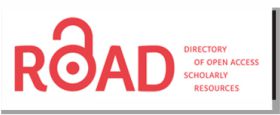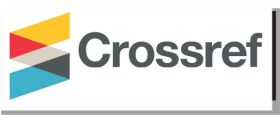Market Value Ratio Analysis of Stock Returns In Companies With Largest Market Capitalization Period 2014-2018
Abstract
This research aims to analyze how much influence the Market Value Ratio has on Stock Returns (case studies are conducted against companies with the largest market capitalization listed on the Indonesia Stock Exchange). The variables used in the analysis in this study are using Price Earning Ratio, Earning Yield, Dividend Yield, and Market to Book Ratio.
The samples selected in this study used purposive sampling methods with a total of 13 stocks and produced 50 sample ratios studied according to the criteria and qualified in the year specified in 2014-2018. The method of analysis used in this study is to use statistical methods of descriptive analysis and linear regression multiplely by using SPSS software.
Based on the results of the hypothesis, it is known that the Price Earning Ratio has a significant influence on the return of the stock, The Earning Yield has an effect but is not significant on the return of the stock, the Dividend Yield and the Market to Book Ratio have no effect on the return of the stock, and the Market Value Ratio simultaneously (together) affects the return of the stock.
Keywords
Full Text:
PDFReferences
Akbar, R., & Herianingrum, S. (2015). Pengaruh Price Earning Ratio (PER), Price Book Value (PBV) dan Debt to Equity Ratio. JESTT, Vol. 2, 698-711.
Alwi, I. Z. (2008). Pasar Modal Teori dan Aplikasi. Jakarta: Yayasan Pancur Siwah.
Bodie, Z., Kane, A., & Marcus, A. J. (2019). Dasar-Dasar Investasi. Jakarta: Salemba Empat.
Brigham, E. F., & Houtson, J. F. (2018). Dasar-Dasar Manajemen Keuangan. Edisi 14. Jakarta: Salemba Empat.
Christy, D., & Azhari, M. (2019). Pengaruh Kebijakan Dividen terhadap Volatilitas Harga Saham pada. e-Proceeding of Management, Vol.6, No.2 Page 2476-2484.
Clare, A., Seaton, J., Smith, P. N., & Thomas, S. (2019). When Growth Beats Value: Applying Momentum Filters to Growth and Value Portfolios. The Journal of Investing Publish Ahead of Print, 1-16.
Darmaji, Tjiptono, & Fakhruddin. (2012). Pasar Modal di Indonesia. Jakarta: Salemba Empat.
Emery, D. R., Finnerty, J. D., & Stowe, J. D. (1998). Principles of Financian Management. New Jersey: Prentice-Hall, Inc.
Fadilla, R. H., Budiharto, & Prananingtyas, P. (2016). Tanggung Jawab Direksi Perusahaan Sekuritas yang Melakukan Transaksi Repurchase Agreement (REPO) Obligasi Fiktif. Diponegoro Law Journal, Volume 5, Nomor 3.
Fahmi, I. (2015). Pengantar Pasar Modal. Bandung: Alfabeta.
Fahmi, I., & Hadi. (2011). Teori Portofolio dan Analisis Investasi. Bandung: Alfabeta.
Fama, F. E., & French, K. R. (2007). The anatomy of value and growth stock returns. Financial, Vol. 63 (6), p. 44-54.
Folkinshteyn, D., Meric, G., & Meric, I. (2017). Value and Growth Stock Price Behavior during Stock Market Declines. The Journal of Investing, 41-42.
Ghozali, I. (2016). Aplikasi Analisis Multivariate dengan Program IBM SPSS 23. Semarang: Badan Penerbit Universitas Diponegoro.
Gunawan, K. H., & Sujana, I. K. (2017). Perbedaan Return-Sesuaian Risiko antara Value Stock dan Growth Stock di Bursa Efek Indonesia. E-Jurnal Ekonomi dan Bisnis Universitas Udayana, 909-934.
Halim, A. (2017). Stock Return Predictability with Audit Quality Concept. Research Journal of Finance and Accounting, Vol 8, No 9, 10-18.
Indonanjaya, K., & Kodrat, D. S. (2010). Manajemen Investasi Pendekataan Teknikal dan Fundamental untuk Analisis Saham. Yogyakarta: Graha Ilmu.
Jogiyanto. (2015). Teori Portofolio dan Analisis Investasi. Yogyakarta: BPFE.
Khurshid, M., Raza, S. H., & Azeem, M. (2013). Bi-Variate Causal Estimates of Dividend Yield, Earning Yield Ratios and Stock Index: A Case of Karachi Stock Exchange. Journal of Poverty, Investment and Development, Vol.1 2013 Page 112-119.
Pudjiastuti, E., & Husnan, S. (2012). Dasar-Dasar Manajemen Keuangan. Yogyakarta: AMP YKPN.
Rabbani, M. F., & Muharam, H. (2017). Analisis Value Stock dan Growth Stock di Bursa Efek Indonesia setelah Krisis Global 2008. Diponegoro Journal of Management, 1-8.
Rabbani, M. F., & Muharam, H. (2018). Value Stock and Growth Stock on Indonesia Stock Exchange after Global Crisis. Diponegoro International Journal of Business, 8-13.
Rahmadewi, P. W., & Abundanti, N. (2018). Pengaruh EPS, PER, CR, dan ROE terhadap Harga Saham di Bursa Efek Indonesia. E-Jurnal Manajemen Unud, 2106-2133.
Rizqiyana, A., & Arfianto, E. D. (2019). Pengaruh Ambiguity, Market Risk Premium, Market to Book, Size, dan Momentum terhadap Return Saham pada Perusahaan yang Terdaftar dalam Indeks LQ45 Periode 2017-2018. Diponegoro Jurnal of Management, Volume 8, Nomor 4, Hal. 70-79.
Rudianto. (2012). Pengantar Akuntansi. Jakarta: Erlangga.
Sorongan, F. A., & Yatna, C. N. (2018). Indikator Prioritas Bagi Investor Baru dalam Menetukan Saham Perbankan Berdasarkan Price to Book Value. Jurnal Riset Manajemen Sains Indonesia (JRMSI), Vol 9, No. 2.
Sunariyah. (2006). Pengantar Pengetahuan Pasar Modal. Yogyakarta: UPP STIM.
Tandelilin, E. (2017). Pasar Modal Manajemen Portofolio dan Investasi. Yogyakarta: PT Kanisius Yogyakarta.
Wahyudi, S. M. (2017). Price Earning Ratio, Dividen Yield, dan Market to Book Ratio untuk Memprediksi Return on Stock Market. Jurnal TEKUN, Volume VIII No. 02 Page 252-272.
Zulfikar. (2016). Pengantar Pasar Modal dengan Pendekatan Statistika. Yogyakarta: CV Budi Utama.
DOI: https://doi.org/10.31334/neraca.v2i1.1101
Refbacks
- There are currently no refbacks.
Copyright (c) 2020 Neraca : Jurnal Akuntansi Terapan

This work is licensed under a Creative Commons Attribution-NonCommercial-ShareAlike 4.0 International License.
_____________________________________________
Neraca : Jurnal Akuntansi Terapan
ISSN Media online 2715-1212
Email : [email protected]
Email : [email protected]
Website: http://ojs.stiami.ac.id/index.php/JATIBARU/index
View My Stats









